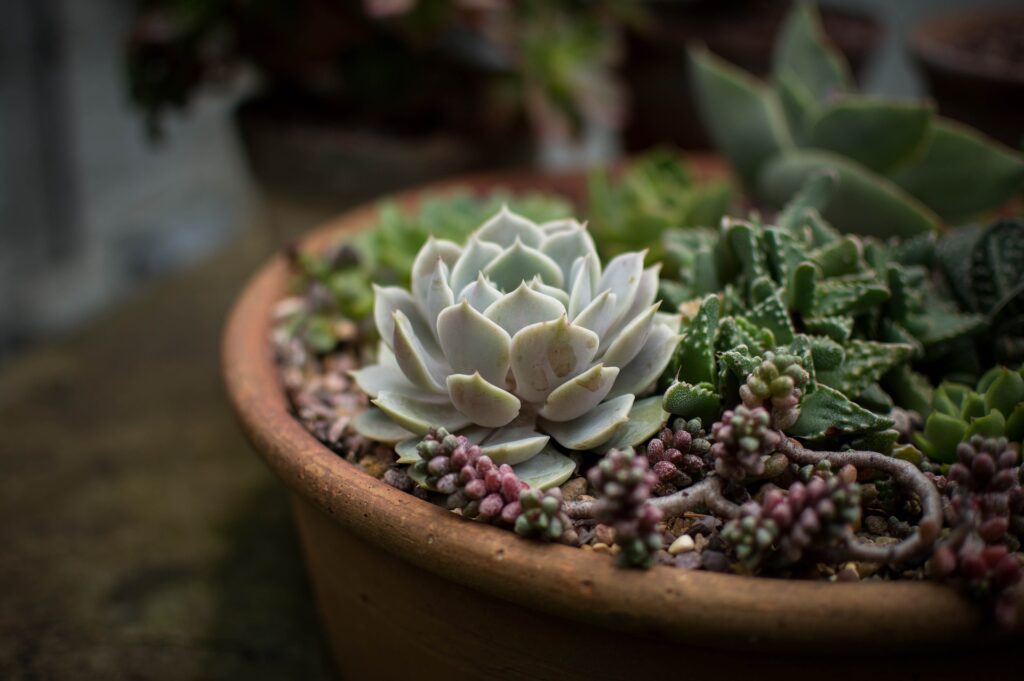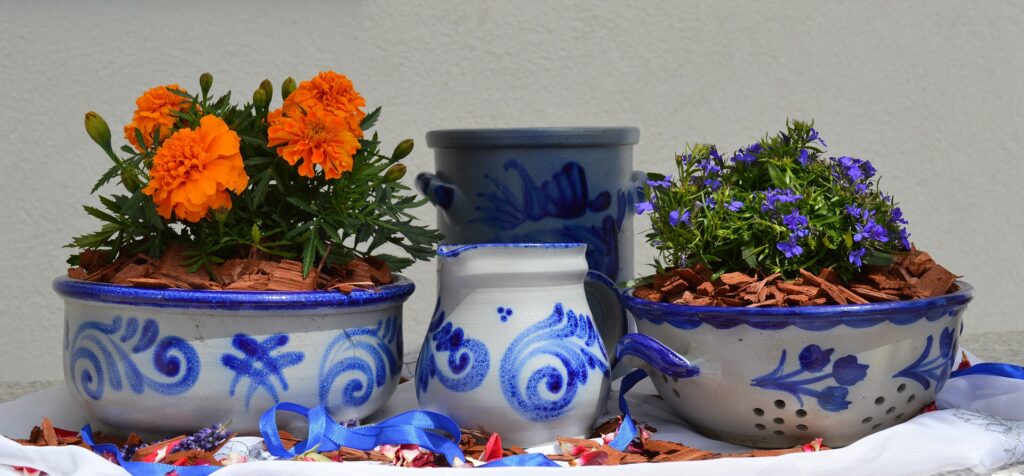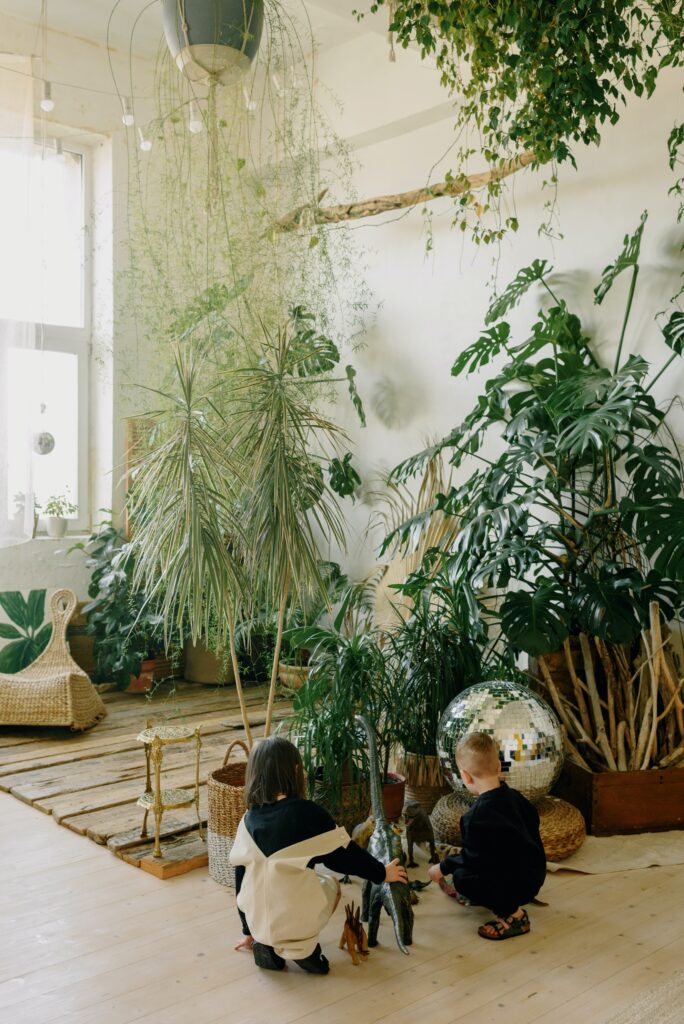The Ultimate Guide to Using Clay Pot for Plants
The Ultimate Guide to Using Clay Pots for Plants

If you’re a plant enthusiast, you know that choosing the right pot can make all the difference in the health and growth of your plants. These pots have been used for centuries and are popular among plant lovers. In this ultimate guide, we will cover everything you need to know about using clay pots for plants.
Check our store
We ship all over The United States
Benefits of Using Clay Pots for Plants
Clay pots are porous, which means they allow air and water to pass through the pot’s walls. This promotes healthy root growth and prevents root rot. They are also eco-friendly, made from natural materials, and can be broken down over time. They are visually appealing and come in various shapes and sizes to suit any plant and decor style.
Choosing the Right for Your Plant
When choosing a clay pot for your plant, it’s important to consider the size and shape of the pot. The pot should be large enough to accommodate the plant’s roots without being too big, as excess soil can lead to overwatering. It’s also crucial to choose a pot with drainage holes to prevent water from accumulating in the pot and causing root rot.
Preparing for Planting

Before using a clay pot for planting, it’s recommended to soak the pot in water for at least an hour. This helps to prevent the pot from absorbing too much water from the soil and drying out the roots of the plant. It’s also important to clean the pot thoroughly to remove any dirt or debris.
Caring for Clay Pots and Plants
it’s important to water them regularly and ensure proper drainage. Overwatering can lead to root rot, while underwatering can cause the plant to dry out and die. It’s also recommended to use a high-quality potting mix to provide adequate nutrition and drainage for your plants. Additionally, it’s important to clean your clay pots regularly to prevent the buildup of algae or bacteria.
Tips for Decorating with Clay Pots

Clay pots can add a rustic and natural touch to any space. Consider clustering a group of pots in various sizes and colors for an eye-catching display. You can also paint or decorate your clay pots to match your decor style.
Frequently ask questions:

1 Are clay pots good for plants?
Yes, They are good for plants as they are porous, allowing air and water to circulate around the roots, promoting healthy growth. Clay pots also help regulate temperature and prevent soil from becoming waterlogged, leading to root rot. You can find valuable information here.
2 How to paint clay pots for plants?
First, clean the pot with soap and water and let it dry completely. Then, use sandpaper to lightly sand the surface of the pot to create a rough texture that will help the paint adhere better. Next, apply a coat of primer to the pot and allow it to dry completely. Finally, apply your desired color of paint to the pot, allowing each coat to dry completely before adding another layer.
3 Are clay pots better for plants?
They can be better for plants than other materials, such as plastic, because they allow air and water to circulate more easily around the roots, promoting healthy growth. Additionally, clay pots are often heavier and more stable than plastic pots, preventing the plant from toppling over.
4 Are they better for plants than plastic?
Clay pots can be better for plants than plastic because they are more porous, allowing air and water to circulate the roots more easily. Plastic pots, on the other hand, can trap moisture and heat, which can lead to root rot and other problems. Additionally, plant pots are often more durable and long-lasting than plastic pots.
5 Are clay pots good for indoor plants?
Yes, clay planters can be good for indoor plants because they help to regulate moisture levels and prevent soil from becoming waterlogged. Additionally, clay pots’ natural, earthy look can add a decorative element to your indoor space. However, it’s crucial to choose a pot size that is appropriate for the size of your plant and to provide adequate drainage to prevent water from pooling at the bottom of the pot.
6 What types of clay pots are there?
- Terracotta pots: These are the most common type of clay pots and are made of porous, unglazed clay. They are ideal for plants that prefer dry soil conditions as they allow air and moisture to circulate freely.
- Glazed: These pots have been coated with a waterproof glaze that makes them less porous than unglazed pots. They are ideal for plants that prefer moist soil conditions and come in a variety of colors and patterns.
- Ceramic pots: These pots are made from a mixture of clay and other materials, such as porcelain or stoneware. They are often glazed and can come in a range of colors and designs.
- Concrete pots: These pots are made of a mixture of cement and other materials, such as sand or gravel. They are durable and heavy, making them ideal for large plants or outdoor use.
- Fiberglass pots: These pots are made from a mixture of fiberglass and resin and are lightweight and durable. They come in a variety of shapes and sizes and can be finished to look like other materials, such as stone or clay.
Conclusion
Using clay pots for plants is an excellent choice for both the plant’s health and the environment. With their porous material, eco-friendliness, and versatile design, these pots are a popular choice among plant enthusiasts. By following the tips and advice in this ultimate guide, you can successfully use them for your plants and create a beautiful and thriving indoor or outdoor garden.

